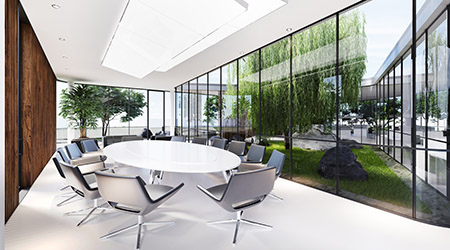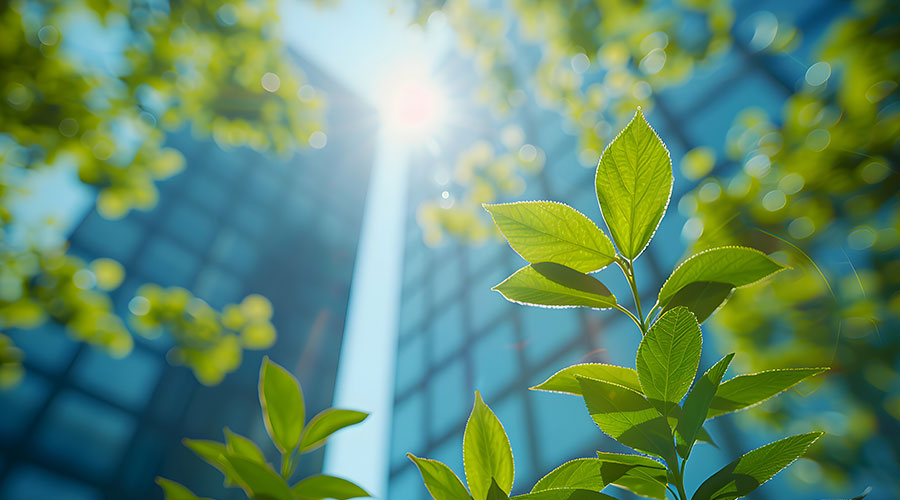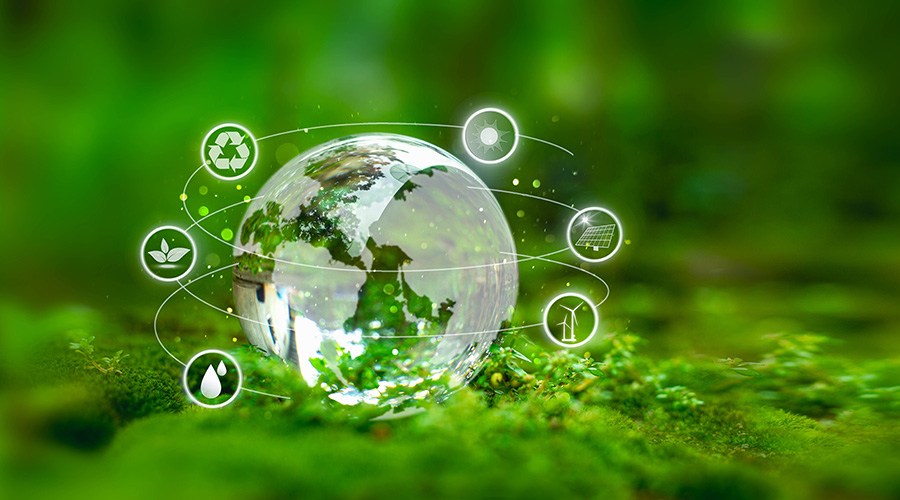Green Uprising: How Office Development Will Emerge from the Pandemic
Though green priorities have slightly shifted as a result of the pandemic, one thing remains the same: Sustainability is still crucial, both for operational efficiency and occupant health, wellness, and safety.
Prior to COVID-19, 13.8 percent of all commercial office buildings in the largest 30 American cities were green certified, the highest percentage in U.S. history. With mixed-use development growing in popularity, thanks to an increasing desire for short commutes, walkable communities, and sustained rental demand -- non-residential growth in green building is still on the rise.
In addition to the inherent environmental benefits, green building provides lower operating costs and promotes worker health and productivity. According to a report from Mordor Intelligence, green building operating costs are lower than traditional using 63 percent less water and 53 percent less electricity.
As markets stabilize and the pandemic’s disruption gives way to new priorities, there is greater opportunity to advance green building. The COVID-related shift to remote and hybrid work coupled with a heightened focus on climate change and investor interest in environmental, social, and governance (ESG) initiatives, sets the stage for the next phase of growth in nonresidential green building. The office and mixed-use developers who transformed the industry with sustainability and green building initiatives are poised to accelerate their impact post-pandemic. Here’s a look at what we can expect from the office and mixed-use sectors.
Changed office environments provide opportunities
The pandemic shifted the conversations between office developers and tenants. For instance, consider indoor air quality. Proper air filtration and changing air are routine parts of building operations that impact costs and health. The pandemic placed a premium on air quality, especially with the CDC regularly updating guidance on ventilation. Now, air quality is at the forefront of building design conversations.
Technology and system upgrades are happening everywhere. Operators are increasingly monitoring outside and inside air, and how this data impacts overall air quality. Many property owners are installing thicker air filters, up to MERV 13-rated, which are nearly twice as thick as previously installed filters and effectively capture airborne virus germs.
One building, APX, a 488,000-square foot, Class A property in Morristown, New Jersey, went the extra mile by installing a GPS needlepoint bipolar ionization system. The high-tech ionization system removes oxygen molecules from the air and converts them into charged atoms that neutralize harmful substances like allergens and viruses. This enables buildings to avoid venting excessively for outside air to clean or change air quality.
The pandemic-induced supply chain disruptions are causing many to hunt for alternative sources and materials. Eco-friendly items like natural insulation or zero-VOC paints, or building materials like bamboo or hempcrete will continue to see higher demand as supply chains recover.
For functionality, there’s less focus on conference rooms and more on green flex space, including multi-function courtyards, garden offices, and green rooftops. Developers are innovating in these areas that companies recognize are the new realities of working in-office, as well as the wellness and cost benefits of these types of open spaces.
Climate change continues to challenge the resilience of commercial facilities. More organizations are investing time and capital to mitigate and adapt to new environmental realities and prepare for natural disasters. The plans will include energy efficiency and green building techniques. The recent Intergovernmental Panel on Climate Change paper reports mitigation for buildings provides energy cost savings and a range of other benefits.
Sustainability will drive value
It’s becoming clear that the focus on sustainability from investors and corporate executives translates into increased values on green buildings. In a recent survey of the National Association of Realtors, more respondents agreed that buildings with green certifications have higher values. And most agents and brokers (69 percent) said energy efficiency promotion in listings is very or somewhat valuable.
Much of the added value from green buildings will come from leveraging data and digital technology to maximize efficiency of infrastructure and adapt to tenant uses. Increasingly, going green will mean going smart. According to a Gartner report, 4 billion people will be connected to IoT devices in commercial smart buildings by 2028. That includes smart utilities and ultra-modern telecom infrastructure that will make offices of the future well-connected, flexible, and resilient.
Connected smart buildings will help create smart cities that will boost public health and quality of life features, increasing values for businesses, workers, and families. Smart cities also know that a “people-first” approach to construction will lead them to a greener, healthier, and more vibrant future.
Moving forward with LEED
Prior to COVID-19, LEED-certification guidelines put more emphasis on water conservation. This means more buildings will be equipped with low-flow toilets, WaterSense-certified fixtures, and gray-water recovery and rainwater catchment systems. And commercial landscape designers will more frequently use native and adapted vegetation that requires less water.
As part of its Healthy Economy strategy, the U.S. Green Building Council released a COVID-19 response including Safety First pilot credits that address everything from cleaning and disinfecting the office to re-entering the workplace. These credits are incredibly important in maintaining the current trajectory of green building in commercial spaces. The credits, especially those that address indoor air quality and HVAC maintenance to prevent airborne transmission, are helping companies across all sectors take full advantage of their real estate investments.
One of the world’s largest companies, Fortune 10 AmerisourceBergen, is doing what many companies couldn’t fathom during the pandemic -- moving into a new, state-of-the-art, LEED Silver-certified office that’s part of an iconic mixed-use development in the middle of a bustling suburban Philadelphia town center. When it is complete, SORA West’s 11-story office tower will be joined by a luxury hotel with a rooftop restaurant and lounge and a first-floor dining experience set in a former historic firehouse, and a 1,500-space parking structure, all set around a vibrant public plaza.
AmerisourceBergen’s commitment is a testimony to the project’s numerous sustainable features and its high-profile, mixed-use nature only enhances its green credentials.
The pandemic gives the world more reason to pay attention to public health, both proactively and from moment to moment in our daily interactions. The same can be said of the pandemic’s impact on green building, as more companies look for healthier solutions for their employees, customers, and bottom line.
The industry is poised to continue leading green building trends, especially as corporate America continues to adjust to new realities and realize new opportunities.
Rich Gottlieb is president and COO of Keystone Property Group.
Related Topics:












